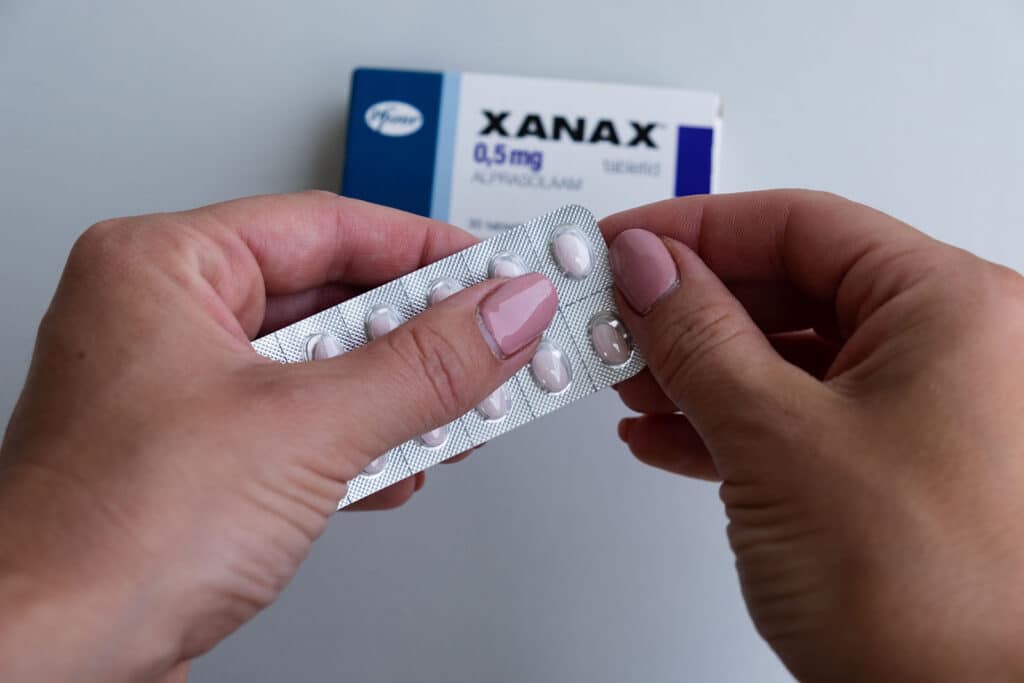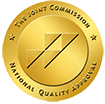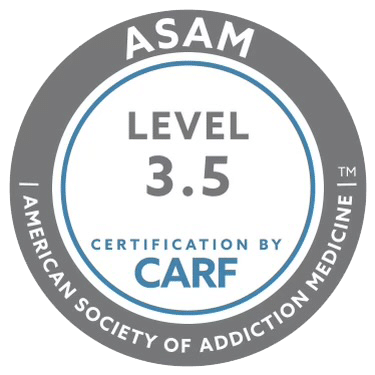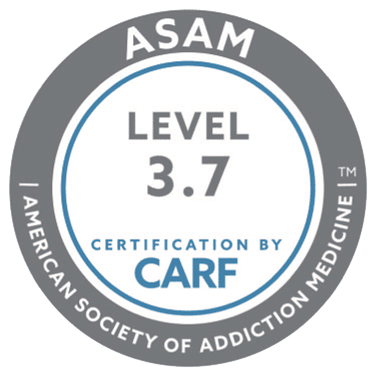Xanax is the brand name for a drug known as Alprazolam. It’s a sedative belonging to the Benzodiazepine family.
When taken in proper dosages, Xanax is effective in treating seizures and anxiety disorders such as agoraphobia and panic disorder.

Its sedating action results from the active compound boosting a chemical that slows down brain activity, leading to a feeling of relaxation and calmness.
When an individual uses Xanax in a different manner than prescribed (more than the prescribed dose, for a longer duration, or more frequently than indicated), uses a different person’s prescription, or buys Xanax illegally, addiction can begin.
Xanax addiction is a growing concern across the country.
- In 2011, more than 124,000 emergency room visits were due to Xanax drug abuse.
- More than 16.7 million prescriptions for Alprazolam were written in 2020.
- 30 percent of deaths resulting from opioid overdose also involve benzodiazepines like Xanax.
- Xanax has boxed warnings from the FDA to alert patients and doctors about the possible occurrence of dangerous effects, including risk for addiction, misuse, physical dependence, and withdrawal.
Treating Xanax addiction is vital to protect the patient from serious side effects such as seizures, breathing problems, paranoia, and suicidal tendencies.
Xanax addiction can also lead to overdose symptoms that can leave permanent effects such as lung damage and CNS depression, which can result in death.
How Does Xanax Addiction Happen and How To Recognize It
As one of the most commonly prescribed drugs in the benzodiazepine family, Xanax addiction is more than likely to happen.
There are several reasons why people become addicted to Xanax and many symptoms/signs that can give away a Xanax addict. We’ll explain each of these below.
Causes of Xanax Addiction
Thanks to the drug’s relaxing and calming effects, taking Xanax can be linked to feelings of pleasure and euphoria.
Xanax drug addiction can be triggered by not following the prescription as specified and trying to self-medicate for stress/anxiety.
Some risk factors can increase the odds of Xanax addiction, whereas the fear of dealing with withdrawal symptoms can make it worse.
Not Taking Xanax as Prescribed`
When an individual doesn’t adhere to the dosage and directions indicated in the Xanax prescription, they’re probably on a fast track to addiction.
Examples of failing to follow a Xanax prescription include taking more than the prescribed dose, taking the drug for a longer duration than outlined, or taking the drug more frequently than indicated.
Using the prescription of another person or buying the drug from illegal sources also falls under the category of not taking Xanax as prescribed.
Fear of Withdrawal and Rebound
Alprazolam in Xanax has a relatively short half-life. Its effects start wearing off after 11 hours of taking the drug, which means that a person can develop an addiction even at low doses because it’s easy to become tolerant to Xanax.
Tolerance can happen at any dose of Xanax, leading to a short-lived duration of the drug’s therapeutic action. At the same time, the sensation of coming down from the high and experiencing withdrawal symptoms hits faster.
To avoid the unpleasant and potentially painful effects of Xanax withdrawal, people may continue taking the drug and develop an addiction.
In addition to fear of withdrawal, there’s also fear of rebound.
Using Xanax can cause a phenomenon known as rebound symptoms if you suddenly stop taking the drug. It manifests as a more severe reoccurrence of the symptoms that you’re using the drug to treat.
To avoid these consequences, people may continue taking Xanax as the discomfort and pain seem to outweigh the benefits of stopping.
Belonging to Risk Groups
Another factor that can contribute to a person developing an addiction to Xanax is if they belong to a risk group.
If you or a loved one fall under one or more of the following categories, strict supervision should be exercised when taking Xanax:
- A history of substance abuse in the family.
- A history of alcohol abuse.
- Suffering from ASPD (antisocial personality disorder).
- Suffering from psychiatric disorders such as bipolar disorder or depression.
- Age between 18 and 25 years; Young adults who take Xanax tend to also take other illegal drugs (such as marijuana and opioids) and are more likely to suffer from undiagnosed or diagnosed mental conditions.
The reasons why these groups are at greater risk of benzodiazepine addiction are varying.
Some people are more genetically predisposed to substance abuse and addiction, while others are more inclined to addiction due to mental illness.

Symptoms of Xanax Addiction
Before we get into the symptoms of Xanax addiction, you should familiarize yourself with the side effects of regular use of Xanax since the two can easily overlap.
As a sedative, Xanax causes CNS (central nervous system) depression. This means it promotes the brain and nervous system to experience a decline in activity.
The side effects of taking Xanax can be behavioral, psychological, and physical. They include:
- Relaxation
- Mood swings
- Euphoria
- Irritability
- Loss of sexual appetite
- Erectile dysfunction
- Dry mouth
- Dizziness
- Fatigue
- Nausea
- Vomiting
- Fatigue
- Tremors
- Seizures
- Slurred speech
- Imbalance
- Shortness of breath
- Confusion
- Memory issues
- Lack of inhibition
- Lack of focus
In addition to these side effects, Xanax can also cause rebound symptoms as we explained earlier.
In the event of Xanax addiction, any of the symptoms mentioned above can appear but will be more intense. Some additional symptoms of Xanax addiction include:
- Excessive drowsiness
- Impaired coordination
- Vertigo
- Extremely slurred speech
- Difficulty walking
- Blurry vision
- Frequent seizures
- Sleeping for long periods
- Sluggishness
- Frequent headaches
- Delirium
- Constant dry mouth
- Impairment of cognitive functions
The risks associated with the misuse of Xanax don’t stop at the symptoms of addiction. There’s also the danger of overdosing, leading to acute benzodiazepine toxicity.
Symptoms of Xanax overdose typically start showing within 4 hours of taking the elevated dose; when the concentration of Alprazolam in the blood reaches its highest levels. The overdose symptoms can last for up to 36 hours and may leave behind permanent damage to the body.
For example, a Xanax overdose can cause pulmonary aspiration, which can develop into aspiration pneumonia or chronic lung disease.
Not to mention, a Xanax overdose can cause increased depression in CNS activity as a direct result of Alprazolam. This depression manifests as a slower heart rate and reduced breath rate, which can develop into a coma or stop heartbeats after a too-high dose.
That said, if any of the following symptoms of Xanax overdose are present, immediately seek medical attention.
- Lethargy
- Jerking eyes
- Shallow and slow breathing
- Visual or auditory hallucinations
- Low blood pressure
- Low body temperature
- Aggression or agitation
- Seizures
- Confusion
- Difficulty in speaking
- Impaired coordination
Signs of Xanax Addiction
It’s important to differentiate between abusing Xanax and being addicted to the drug.
Xanax abuse is typically associated with recreational use for a specific event, like getting a buzz during a party. In such a case, the person may take Xanax with alcohol or other drugs.
Usually, people who abuse Xanax can stop taking it without suffering from severe withdrawal symptoms and they still have sufficient control over their drug use and their lives.
Xanax addiction, on the other hand, is when taking the drug becomes a habit that the individual can’t stop. It’s especially likely to develop when the person believes that the drug is the only way they can manage their anxiety and stress.
Xanax addiction occurs when the person is both physically and psychologically dependent on the drug.
Even if you or your loved one has been prescribed Xanax, you can develop an addiction due to the quick build-up of drug tolerance. That’s when the body needs an increasingly higher dose of a drug to achieve the same effect.
As such, Xanax tolerance leads to taking larger and more frequent doses.
When an individual is addicted to Xanax, they’ll show behavioral, physical, and psychological signs as follows:
- A craving or urge to take Xanax is present and so strong that it’s hard to focus on anything else.
- Taking Xanax for a longer duration than originally specified or in increasingly larger or more and more frequent doses.
- Having to take more Xanax to achieve the same effect.
- Experiencing withdrawal symptoms (discussed later on) upon stopping taking Xanax.
- Spending most or all of the day doing activities related to Xanax.
- Spending a significant portion of the time trying to get Xanax, use it, and rebound from its effects.
- Continuously wanting to cut down on or stop taking Xanax but failing to do so.
- Recurrent use of Xanax even though taking the drug comprises your ability to fulfill responsibilities and obligations at home, work, or school.
- Recurrent use of Xanax despite it resulting in interpersonal or social problems.
- Becoming less involved in social activities to take Xanax.
- Giving up hobbies and important activities to take Xanax.
- Continuing to take Xanax despite knowing that the drug causes or worsens physical and psychological issues.
- Continuing to take Xanax even in situations promoting physical harm, like when driving.
If you or a loved one has exhibited 2 or more of these during the past year, consider seeking help.
What Are the Treatment Options for Xanax Addiction?
Selecting the right approach to treat Xanax addiction depends on the severity of the case. The following are the most common treatment options to consider:
Detoxification
Shortened to detox, this process involves gradually decreasing the dose of Xanax for the patient until they stop taking it.
Because the withdrawal symptoms can be very severe with Xanax, detox is often done slowly. The process becomes even longer if the drug had been used for a prolonged time or in high doses.
Xanax detox starts with an assessment of the case, and it should be done under medical supervision to correctly taper off the drug and constantly monitor the effects of withdrawal.
Medication-assisted Treatment
As part of Xanax detox, some medications can be administered by the medical treatment team to ease withdrawal symptoms in more severe cases and/or prevent dangerous complications.
Examples of medications that may be given to help treat Xanax addiction include Diazepam, Clonazepam, and Chlordiazepoxide.
These medications can alleviate anxiety, spasms, insomnia, and other withdrawal symptoms. They all have a longer half-life than Alprazolam, which means they stay in the blood for a longer time.
As such, these drugs are a lot safer than Xanax and less likely to cause dependence.
Behavioral Therapy
This aspect of treatment is key to maintaining abstinence and recovery from Xanax addiction.
Behavioral therapy can include various types of therapy, including:
Cognitive Behavioral Therapy
Here, the therapist helps the patient process their thoughts and feelings and understand how they relate to their addiction and negative behavior.
Contingency Management
Here, the patient works with the therapist to find motives that can drive them to rectify negative behavior.
Motivational Interviewing
Here, the therapist asks the patient questions to help boost their motivation to make a change.
Support Groups
Aftercare is just as essential to Xanax addiction treatment as the detox process because it ensures the patient stays on track with their recovery.
12-step support programs similar to AA (alcoholics anonymous) and NA (narcotics anonymous) that are geared towards benzodiazepines can be of substantial help.
You can also try non-12-step programs such as outpatient therapy, group therapy, counseling, and PHP (partial hospitalization programs).
Challenges of Xanax Addiction Treatment
The biggest issue that can hinder the successful treatment of Xanax addiction is the drug’s withdrawal symptoms, followed by co-occurring mental disorders and relapse risk.
Xanax withdrawal symptoms can be so severe that the patient continues to use the drug just to avoid dealing with them. The most common ones include:
- Insomnia
- Aggression
- Agitation
- Anxiety
- Panic attacks
- Depression
- Muscle aches and pain
- Irregular heartbeats
- Weight loss
- Suicidal thoughts
- Tingling and numbness in the face, hands, or feet
- Increased sensitivity to sound and light
- Uncontrollable tremors
- Paranoia
- Nightmares
- Nausea
- Vomiting
- Mood swings
- Headaches
- Sweating
Final Thoughts
Xanax addiction treatment aims to stop long-term use of the drug. Addiction typically develops due to prescription-related misbehavior or fear of withdrawal, and due to the drug’s quick build of tolerance, Xanax is easily misused.
If you or anyone you know shows symptoms/signs of Xanax addiction and needs assistance in their journey to recover from addiction, please don’t hesitate to seek help.
Xanax addiction is treatable but it doesn’t happen overnight. Patience, forgiveness, and support are crucial to recovery, along with behavioral therapy and relapse prevention measures to avoid falling back into the pit.
FAQ
What is Xanax addiction?
What are the signs and symptoms of Xanax addiction?
How does Xanax addiction develop?
What are the risks of Xanax addiction?
What are the treatment options for Xanax addiction?
What is the detox process for Xanax addiction?
How long does Xanax addiction treatment last?
How can I support a loved one who is struggling with Xanax addiction?
How long can you take xanax before getting addicted?







